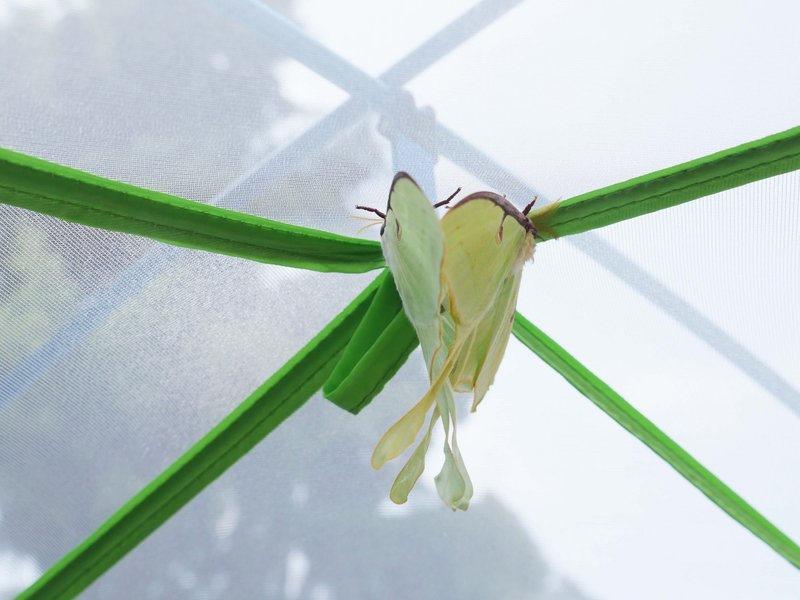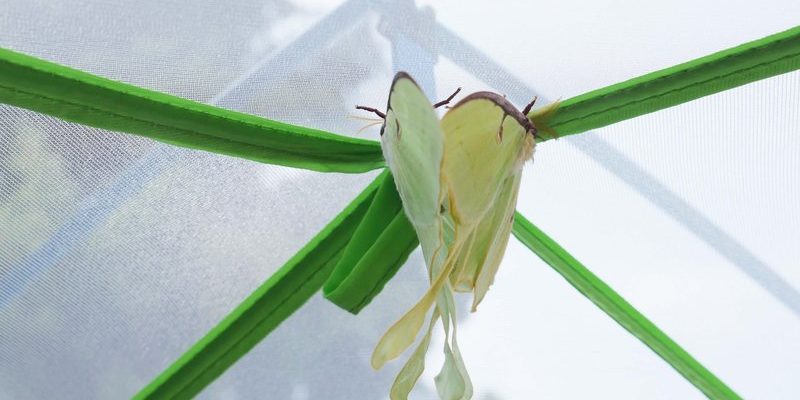
The Luna moth, known scientifically as *Actias luna*, is not just a pretty face in the insect world. It’s a vital part of the ecosystem, contributing to pollination and serving as a food source for various predators. As climate change alters their habitats, these moths face new challenges. Let’s take a closer look at how this stunning creature is affected by our changing planet.
What Is the Luna Moth?
The Luna moth is one of North America’s largest moths, boasting a wingspan that can stretch up to four to five inches. With its striking pale green wings and long tails, it’s easy to see why people are drawn to it. But there’s more to these moths than just good looks. They belong to the Saturniidae family, which is known for its large size and dazzling colors.
These nocturnal moths have a life cycle that includes several amazing stages. Starting as a tiny egg, they hatch into caterpillars that feast on leaves, mostly from trees like walnut, hickory, and sweetgum. After a while, they spin a cocoon and enter the pupal stage, where they undergo metamorphosis. Finally, they emerge as adults, ready to mate and continue the cycle. Unfortunately, climate change disrupts this process, impacting everything from their food sources to their mating habits.
How Climate Change Affects Luna Moth Habitats
Let’s talk about where Luna moths live. These beautiful creatures typically thrive in deciduous forests and woodlands. But climate change is throwing a wrench into that. With rising temperatures and changing precipitation patterns, their habitats are shifting, often disappearing altogether.
As the climate warms, certain trees that the caterpillars rely on for food may not survive. For example, if hickory trees in a region can’t adapt to the new climate, the Luna moth caterpillars will struggle to find enough to eat. This is important because if they don’t get enough food during their growth stages, they may not reach adulthood at all.
Moreover, as habitats shift, Luna moths may find themselves in competition with other insects or face new predators that have moved into their changing environment. Imagine trying to find a place to live while the neighborhood keeps changing. It’s stressful, and unfortunately, these changes can lead to a decline in their populations.
Temperature Extremes and Their Effects
In addition to habitat loss, extreme temperature fluctuations pose a significant threat to Luna moths. During their life cycle, they are quite sensitive to temperature changes. A sudden cold snap can interrupt their mating cycles or even kill off eggs and larvae that aren’t equipped to handle harsh cold.
On the flip side, higher temperatures can disrupt their natural rhythms. For instance, warmer nights can lead to early hatching, which means eggs may hatch before food sources are available. Picture a caterpillar emerging from its egg only to find a barren landscape. It’s a sad scenario, but unfortunately, it’s becoming more common as our climate continues to change.
Changing Weather Patterns and Mating
Luna moths have a brief adult life, typically lasting only about a week. During this time, they need to find a mate to reproduce. However, erratic weather patterns can interfere with their mating rituals. If it rains excessively or temperatures are too extreme, moths may be reluctant to fly.
Mating often occurs at specific times when conditions are just right, and alterations in weather patterns can lead to missed opportunities. Imagine planning a perfect date, only to be rained out! This disruption can lead to decreased reproductive rates, making it harder for the population to sustain itself.
Pollination and Ecosystem Impact
Luna moths, while not the most frequent pollinators, do play a role in the ecosystem. They help pollinate various plants while visiting flowers for nectar. As their populations decline due to climate change, plants that rely on them may find it harder to reproduce.
Furthermore, the food chain is interconnected. Without Luna moths to serve as prey for birds and other wildlife, the entire ecosystem can become unbalanced. For instance, birds that depend on these moths as a regular food source may struggle to find enough to eat. It’s a classic case of the butterfly effect—small changes lead to larger consequences in the ecosystem.
Conservation Efforts for Luna Moths
When it comes to saving the Luna moth, every little bit helps. Individuals and organizations are working to create awareness about the importance of preserving habitats and reducing climate change’s impact. Simple actions like planting native trees and reducing pesticide use can make a difference.
Community outreach is also crucial. Educating others about the Luna moth and its role in the ecosystem can inspire more people to take action. Whether it’s maintaining a garden that attracts Luna moths or participating in local conservation efforts, every small action counts towards making a positive change.
Luna moths are not just beautiful creatures that flutter through our forests; they are important indicators of a healthy ecosystem. Climate change poses significant challenges to their survival, from habitat loss to disrupted mating cycles. While the situation is serious, there is hope. Together, through education and conservation efforts, we can help ensure that these magnificent moths continue to grace our nights for generations to come.
So, next time you marvel at a Luna moth, think about the world it inhabits and the challenges it faces. Our actions can make a difference—not just for the Luna moth, but for the entire planet. Let’s be aware and act responsibly, keeping the delicate balance of life intact.

